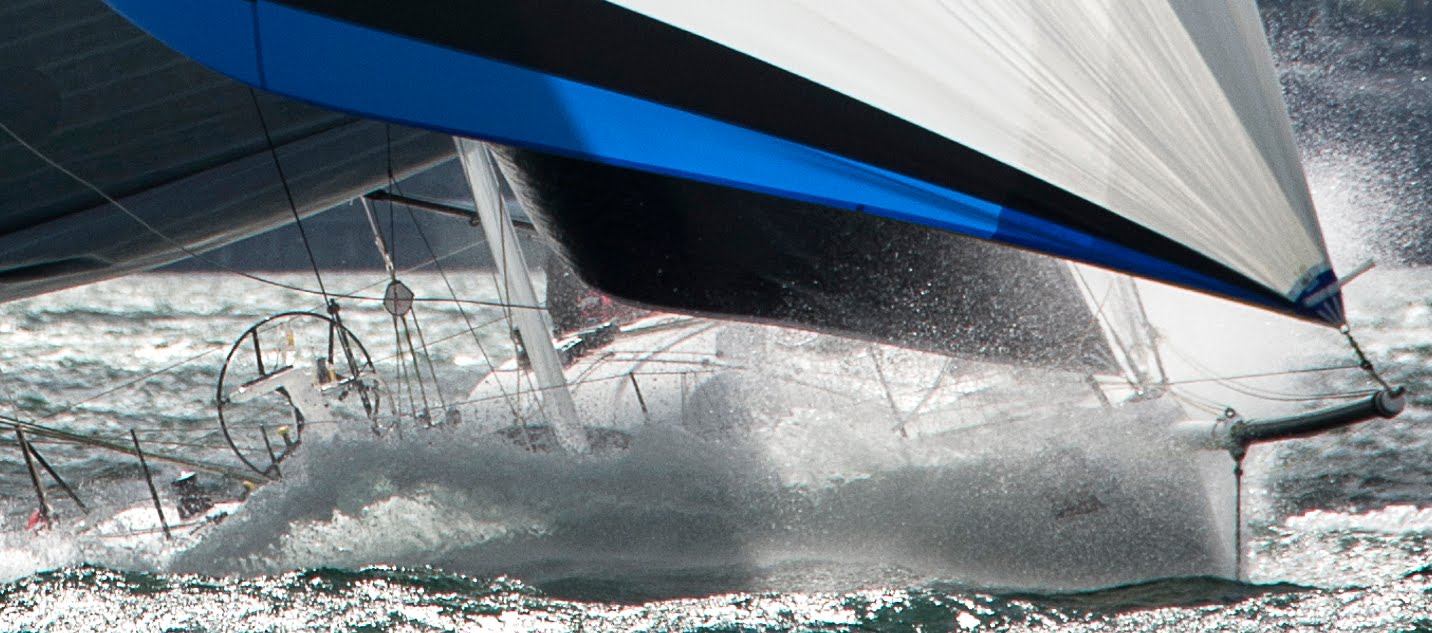Without a working autopilot despite everyone's best efforts to get it going (Tony spent all day on Christmas Eve until 11.30pm on the phone to the fabulous Bob Evans and Woolfie (with Craig Shearer's help)), we couldn't get it to work. Probably should have tried it earlier but with fully crewed racing who needs an autopilot?
On the way to Gisborne, I realised how sore my left arm was from the recent fracture. I had given it a pretty good bashing on this trip and at times had trouble hanging on to the boat. Driving was no problem but that is only about 40 percent of what was needed for the RNI. I had also missed out on critical time on the boat and apart from being able to help with sail changes when fully crewed, I wasn't strong enough to do so two handed.
Following dropping off Rob and a few hours kip, we met Woolfie at the dock at 9am to sort out the autopilot.
That weekend, we had Craig Partridge, the boys from Norths (Josh and Magnus), Dave from Hall Spars, Rob, Tony and myself for a fang on the harbour. This was Craig's first time on Blink in a decent breeze and his smile said it all.
Given the forecast and that we didn't have an autopilot, we decided to ask Craig Shearer to join us for a delivery to Auckland and once there, we would get the autopilot sorted and do the qualifying miles over a long weekend before the RNI.
Blink sailed beautifully in a biggish sea. She is so stable and keeps her nose up despite all our sails being in the bow. We sailed using our compass in lousy visibility in rain, at a slightly peculiar CoG until we worked out that by having worked on the instruments to resolve the autopilot issue, we had lost our previously set compass deviation of 20 or so degrees. With no horizon or stars, and coping with a big sea, rain etc we only realised what had happened from the chart plotter when we were nearly 60 miles out from the shore (but still pretty close to the East Cape rhumb line) and out of VHF range. Some motor sailing to get us back nearer shore was in order!
With motor sailing we used quite a bit of fuel so decided to pull into Gisborne to refuel and sort out a bracket that had broken holding the 24 volt alternator in place.
Gisborne was fantastic. All credit to Greg the marina manager who was like the MacGyver of help. He put us in touch with the fabulous and meticulous Peter who was a mechanical engineer and tool maker and gas fitter Dave (stove story below).
Tony had spent 100s of hours on Blink from the time of her launch and with everyone's huge effort to get Blink ready for the RNI, it was a fairly straightforward decision to sub myself out. When I broke my arm, I had rung Rob Shaw and asked if he would be interested in doing the RNI with Tony if I wasn't up to it. From Gisborne, I rang Rob again and a few hours later we got the call to say that he would love to do it.
Rob drove from Auckland to Gisborne and then Tony and Rob set off for the qualifier to Auckland still without an autopilot. I drove Rob's car back. Craig flew back to Welly.
The delivery was uneventful except for a little incident with a sunfish hitting the starboard rudder (no damage to the rudder, the sunfish would say otherwise). Rob and Tony had a full range of conditions - zero to 30s, all uphill, to take just over 40 hours to Westhaven. On the way, they tested how long they could leave the wheel for and in light airs (12 knots up wind), Blink sailed for 15 minutes without needing to touch the wheel. In heavier airs (20 knots and open water), Blink sailed for 12 minutes. All credit to Rob for designing such a well balanced boat.
The RNI team arrived at 2.30am to be met at the dock by yours truly flashing my iPhone torch to show them the berth for Blink kindly lent to us by Humphrey Sherratt.
The RNI team arrived at 2.30am to be met at the dock by yours truly flashing my iPhone torch to show them the berth for Blink kindly lent to us by Humphrey Sherratt.
Best bit of Gisborne-Auckland was heading towards East Cape flying the Code 0
Approaching Colville
Suset over Auckland
That weekend, we had Craig Partridge, the boys from Norths (Josh and Magnus), Dave from Hall Spars, Rob, Tony and myself for a fang on the harbour. This was Craig's first time on Blink in a decent breeze and his smile said it all.
Blink is happily in Auckland in good time for the RNI and will hopefully see a bit more of the harbour for some racing before the RNI starts.


